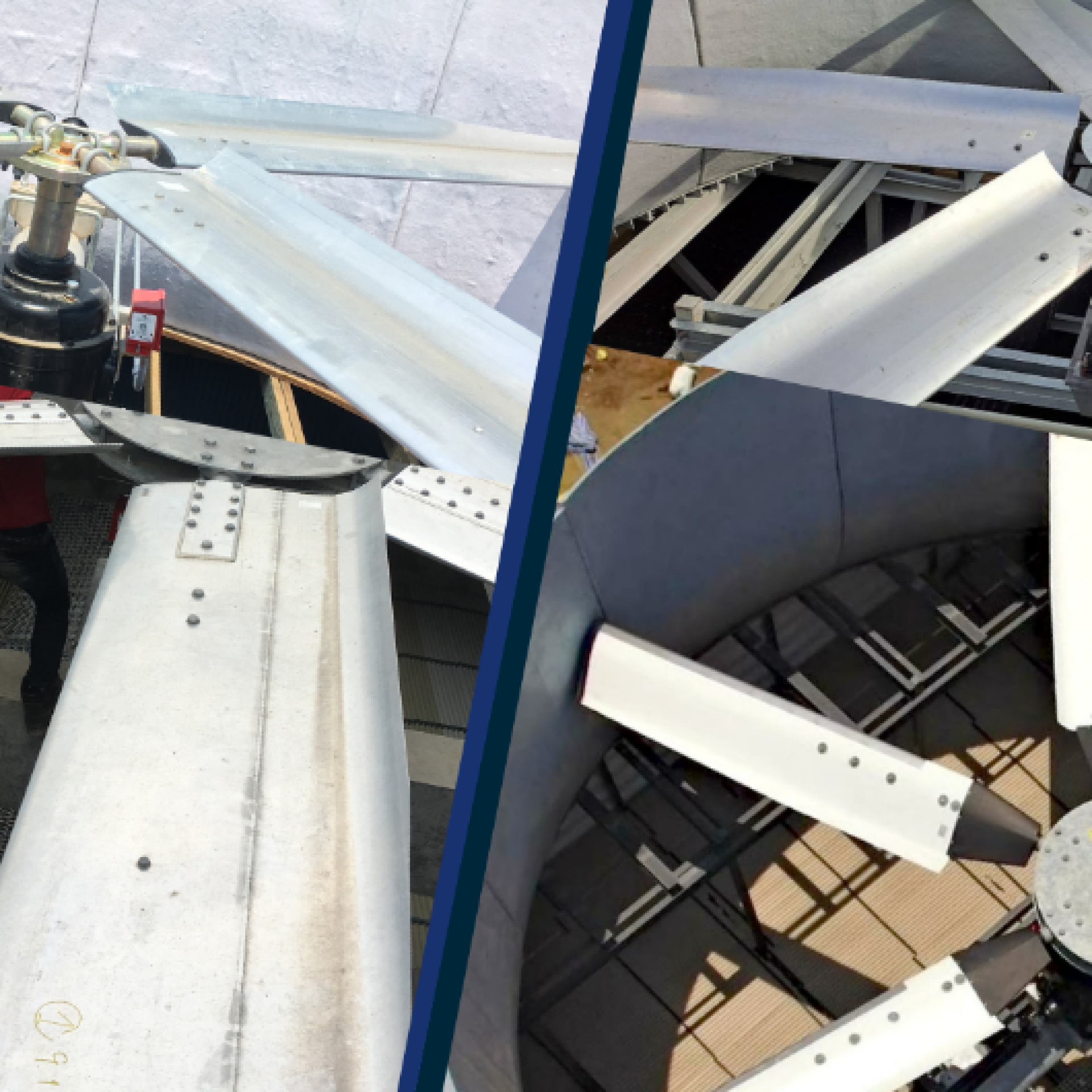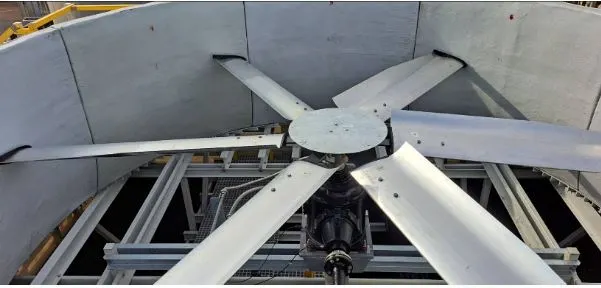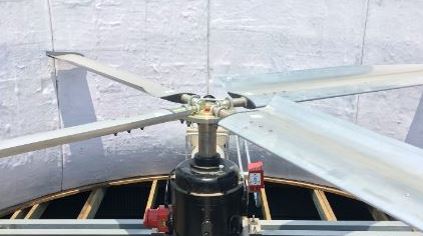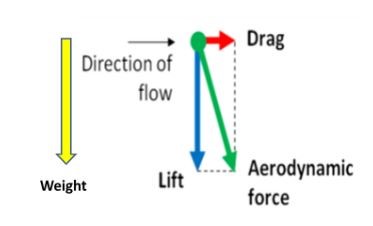Are FRP Fan Blades Really More Energy Efficient than Aluminum Fan Blades?

Heat is what makes things move in manufacturing operations, but an excess of heat may create both damage and risk to the workers and what is being manufactured. The control of heat is absolutely necessary for the avoidance of potential dangers and damages. Fans or cooling towers are generally utilized in manufacturing facilities to assist in the removal of heat generated during the production process.
The fan is a component that contributes to the cooling tower's ability to eliminate heat. Some people will refer to it as the cooling tower's fan blade, others will call it the cooling tower's fan, and yet others will call it something else.
Aluminum and fiberglass-reinforced plastic (FRP) are the two types that are most commonly utilized nowadays.
But I'd like to take a moment to introduce myself before I get into the meat of the topic. Several articles have been released so far. If you are familiar with who we are, you may skip this section. However, for first-time readers of this article:
Don't worry; I'll try to keep this short.
When it comes to cooling towers, in Thailand, no one does it better than Innovek Asia. Successful projects both at home and abroad attest to the fact that our team has more than 15 years of experience with cooling tower products and services, and that we offer an extensive range of assistance, from design to installation to inspection and maintenance.
Introduction done! Now lets get back to the topic.
In this article, we'll investigate if it's true that FRP fan blades are more energy-effective than aluminum ones.
Let's start with meeting the two fans and getting to know them.

Picture 1 : FRP Fan
Starting with FRP Fan, it is a type of fan blade that is manufactured using fiberglass that has been injection molded by a machine.
Advantages: superior corrosion resistance and chemical resistance, low cost, ease of molding, low weight, and low cost.
Disadvantages: One drawback is that it melts at high temperatures. If the fan blades surface is flaking off, you'll need to repair it and bring the fan blade in to have it re-coated, which is quite a task.
FRP blades are most suited for usage with a cooling tower.

Picture 2 : Aluminum Fan
Aluminium Fan is, as the name suggests, a fan that is made from aluminum.
Advantages: Its strength and heat resistance are two of its best features. Aluminum fan blades are simple in comparison to FRP ones, requiring only periodic cleaning to keep them in good working order.
Disadvantages: Weight and corrosion are two issues with aluminum impellers and other metal fan blade parts.
Beveled aluminum fan blade, for use in air-cooled heat exchangers and cooling towers.
Are FRP fan blades more energy efficient than aluminum ones?
Many of you would agree that FRP fans are more energy efficient if you consider the benefits and downsides of each type of fan blades described above. Reason being: they save weight compared to aluminum fans. During operation, you may assume that the fan doesn't need a lot of energy to keep it going. But after more than 15 years in the industry, I can confidently say that this is not the case. In contrast to popular belief, a fan's ability to save energy is not dependent on what kind of material it is made from or how heavy it is.
Present day propeller designs that are effective in both performance and energy savings use the same aerodynamic design concepts as airplane wing designs. This article is for those who are interested in learning more about the Aerodynamic Principle and the many ways in which it improves upon prior designs. To learn more, please click here to visit the linked article.
But if we rephrase the question, at the same shape and same fan blades profile, will FRP fan blades be more energy efficient than aluminum fan blades? For this question, I can confidently say that this definitely is not true.
For further clarification, please see the image below.

Picture 3 : Fan blades rotational axis direction
The Y-axis force in cooling towers is commonly known as the Lift Force, which is analogous to the lifting force generated by an airplane wing. However, in the context of cooling towers, we specifically refer to this force as Air Volume, as it enables the dissipation of heat by facilitating the movement of air.
The X-axis force corresponds to the drag or resistance encountered by the fan blades, and it significantly influences energy consumption.
If you are aware of the weight of the fan blade indicated by the yellow arrow, it represents the force acting along the Y-axis.
The force acting along the Y-axis = Lift + Weight
The force acting along the X-axis = Drag force
Therefore, regardless of the weight of the fan, the drag force and resistance along the X-axis remain unaffected. Initially, the aluminum fan may appear to consume more energy due to its heavier blades and higher inertia compared to the FRP fan. However, when observing extended hours of operation, it becomes evident that both types of fans consume an equal amount of power.
So in conclusion, the increased weight of the fan has no impact on energy consumption.
No fan blade, whether made of FRP or Aluminum, can be considered inherently superior to others in terms of efficiency. However, maximizing the efficiency of your cooling tower and optimizing energy savings relies on selecting the appropriate fan blade for the specific application. This involves paying close attention to details such as the working environment and the cooling tower's fan requirements. By considering these factors, you can enhance the effectiveness of the cooling tower and achieve the best results for your time and effort invested.
The fans in a cooling tower are a significant investment and an essential component of the structure. In the worst situation, poor choice and construction of this equipment will result in wasteful amounts of energy consumption. Your cooling tower is cursed by the fear that chaos will break loose if this essential component isn't chosen and installed properly. Warning: if you decide to replace or repair your fans without first making a thorough plan, you might as well prepare for Doomsday
Choose your provider wisely, for their expertise and precision could mean the difference between salvation and cataclysmic ruin.
If you have any questions about cooling tower or have an idea for our next article, please feel free to make suggestions and discuss via email at coolingexpert@innovek.co.th We give advice and answer your query without any charge. Yes, free of charge from the expertise of Cooling tower.
Last but not least if you like our articles and want to follow us and to ensure that you not miss our article, please follow us on
Facebook: Innovek Asia
ID LINE: @innovek
or you can click Follow and receive news in the bottom left corner of our website.








